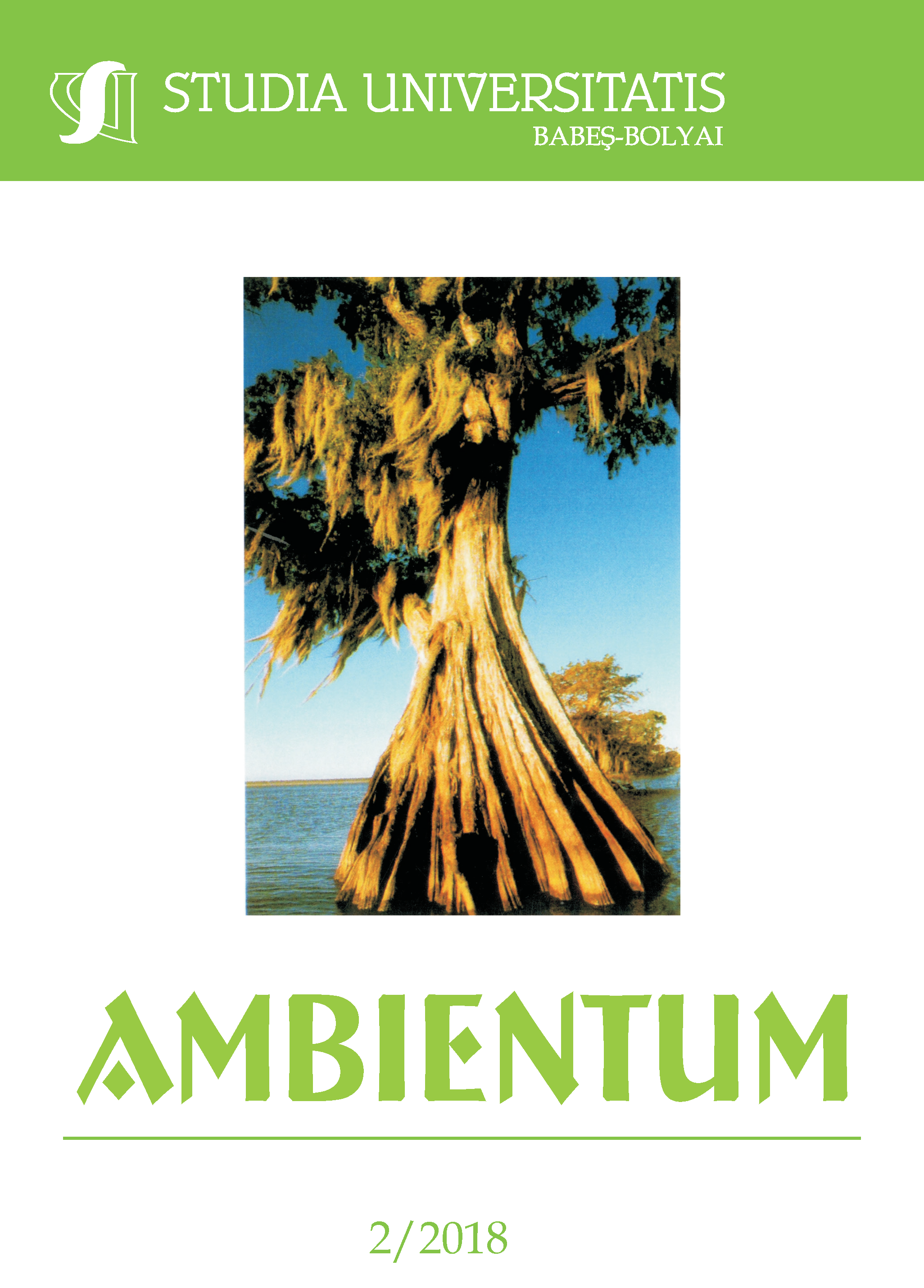ECO-FRIENDLY RECYCLING POTENTIAL OF MICROWAVE MELTING FOR THE RECOVERY OF USEFUL AND PRECIOUS METALS FROM E-WASTE
DOI:
https://doi.org/10.24193/subbambientum.2018.2.04Keywords:
recycling, non-ferrous metals, microwaves, e-wastes.Abstract
The processing of waste electrical and electronic equipment (WEEE) has become an issue of significant importance due to the large volumes being generated and to the content of rare and valuable metals as well as environmentally toxic materials (organic compounds). Presently, WEEE is regarded as an important secondary resource of useful metals.
The aim of this study is to evaluate the content of base and precious non-ferrous metals in such wastes collected in Romania and to assess the potential of their recycling through processing in microwave field.
Electric and electronic wastes are complex mixtures of materials and components, with chemical compositions which depend on their sources (printed circuit boards - PCBs, mobile phones, television and radio sets, home appliances and industrial equipment). In PCBs the metallic fraction is of approximately 30-50 wt.% (with 45-65 wt.% Cu, 0.5-20% Pb, 15-25% Sn, 5-8% Zn, 0.4-0.8% Ag, 0.08-0.2% Au and 2-5% other metals such as Fe, Ni, Al, Sb, Cr, Mn etc.). The non-metallic fractions, which account for 50-70 wt.%, contain substances such as brominated flame retardant, thermosetting resin, reinforced materials and other toxic and hazardous organic compounds. The combustion of these materials during the pyrometallurgical processes may cause serious environmental problems, due to the generation of toxic gases.
The microwave melting of WEEE represents a promising state-of-the-art, ecological and energy efficient alternative for the conventional methods with a remarkable applicative potential. The advantages of this method are: i. reduced melting time with energy savings of 30-40%, compared to traditional processes (a microwave furnace can easily attain temperatures up to 1600°C in less than 30 minutes); ii. low content of organic substances. iii. facile extraction of the enclosed metal fractions; iv. improved process control; v. absence of direct contact with the melting materials and vi. environmental-friendly approach through the possibility of treating the toxic gas emissions in a microwave field at high temperatures (1300 ÷ 14000C).
References
Bescher E.P., Sakkar U., Mackenzie J., 1992, Microwave Processing of Aluminum Silicon Carbide Cermets. Mat.Res.Symp, Proc., 269, pp. 371-378.
Cheng J., Roy R., Agrawal D., 2002, Radically different effects on materials by separated microwave electric and magnetic fields. Mater. Res. Innovat., 5, pp. 170-177.
Das S., Mukhopadhyay A. K., Datta S., Basu D., 2009, Prospects of microwave processing: An overview. Bull. Mater. Sci., 32 (1), pp. 1–13.
Grundas S., 2011, Advances in Induction and Microwave Heating of Mineral and Organic Materials, InTech, India, pp. 3-5 and 303-312.
Havlik T., Petranikova M., Orac D., Miskufova A., 2009, Hydrometallurgical treatment of used printed circuit boards after thermal treatment, 3rd AMIREG International Conference: Assessing the Footprint of Resource Utilization and Hazardous Waste Management, Athens, Greece, pp. 164-169.
Leonelli C., Veronesi P., Denti L., Gato A., Iuliano L., 2008, Microwave assisted sintering of green metal parts. J. Mater. Process. Technol., 205, pp. 489-496.
Lorenson C., Ball M.D., Herzig R., Shaw H., 1991, The Microwave Heating Behavior of Metallic-Insulator Composite Systems. Mat. Res. Symp. Proc., 189, pp. 279-282.
Robinson B. H., 2009, E-Waste: An assessment of global production and environmental impacts. Science of the Total Environment, 408, pp.183-191.
Rodiger K., Dreyer K., Gerdes T., Willert-Porada M., 1998, Microwave Sintering of Hardmetals. Int. J .Refractoy Met and hard Mater., 16, pp. 4-6, and 409-416.
Roy R., Agrawal D., Cheng J., Gedevanishvili S., 1999, Full sintering of powdered-metal bodies in a microwave field. Nature, 399, pp. 668-670.
Roy R., Peelamedu R., Hurtt L., Cheng J., Agrawal D., 2002, Definitive experimental evidence for Microwave Effects: radically new effects of separated E and H fields, such as decrystallization of oxides in seconds. Mater. Res. Innovat., 6, pp. 128-140.
Standish N., Huang W., 1991, Microwave Application in Carbothermic Reduction of Iron Ores. ISIJ International, 31, pp. 241-245.
Thostenson E. T., Chou T.-W., 1999, Composites: Part A 30 1055.
Walkievicz J., Kazonich G., MacGill S.L., 1988, Microwave Heating Characteristics of Minerals and Compounds. Min. Metall. Processing, 5, pp. 39-42.
Whittaker A.G., Mingos D.P., 1995, Microwave-assisted solid-state reactions involving metal powders. J. Chem. Soc., pp. 2073-2079.
Yoshikawa N., 2009, Fundamentals and Application of Microwave heating of Metals. Materia, Japan (Bulletin of Japan Inst. Metals), 48 (1), pp. 3-10.
*** An Integrated Approach to Electronic Waste (WEEE) Recycling, 2007, Project funded by DEFRA Waste and Resources Research Programme Reference WRT208, Final Project Report, Deliverable M12 SID5 Form – Section 8.
*** Govt moves to stem tide of 'e-waste' (http://www.nationmultimedia.com).
*** Prevention and integrated control of pollution (IPPC), 2001, Reference Document on the Best Techniques Available in the Non-ferrous Metals Industry, Romanian Ministry of Environment and Water Management, National Agency for Environment Protection, December 2001, page ii, www.anpm.ro (Romanian).
*** www.cee-environmental.com
*** Recycling technology advances and new material development key to successful e-waste recovery, http://www.emsnow.com/npps/story
*** Resource Recycling Fund Management Committee, Environment Protection Administration, Taiwan, ROC. http://cemnt.epa.gov.tw/eng/.
*** Sustainable Innovation and Technology Transfer Industrial Sector Studies, Recycling, 2009, – from E-Waste to Resources, United Nations Environment Programme.
Downloads
Published
How to Cite
Issue
Section
License
Copyright (c) 2018 Studia Universitatis Babeș-Bolyai Ambientum

This work is licensed under a Creative Commons Attribution-NonCommercial-NoDerivatives 4.0 International License.





 ISSN (online): 2065-9490 | ISSN (print): 1843-3855 | ISSN-L: 2065-9490
ISSN (online): 2065-9490 | ISSN (print): 1843-3855 | ISSN-L: 2065-9490